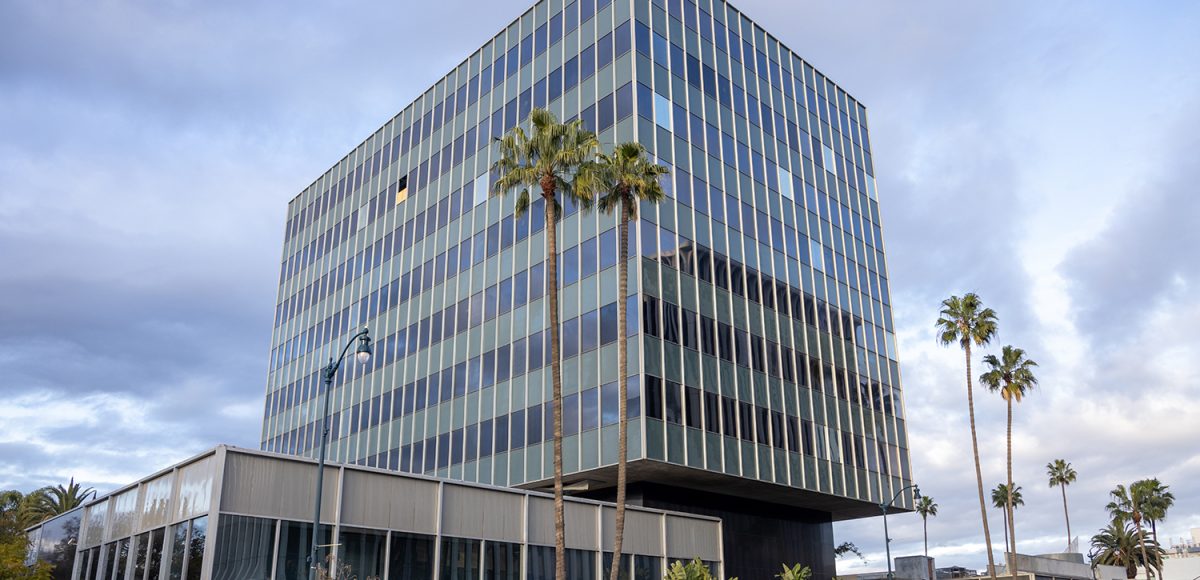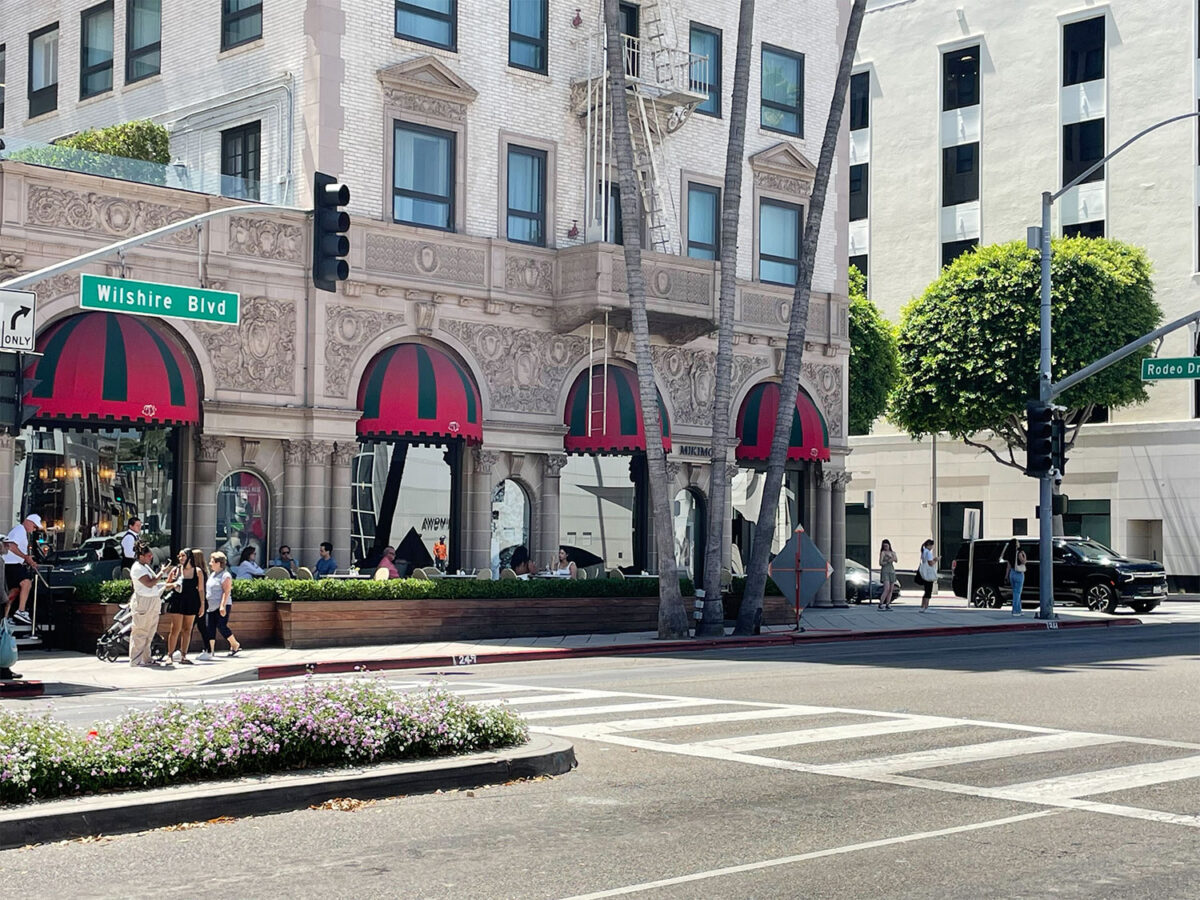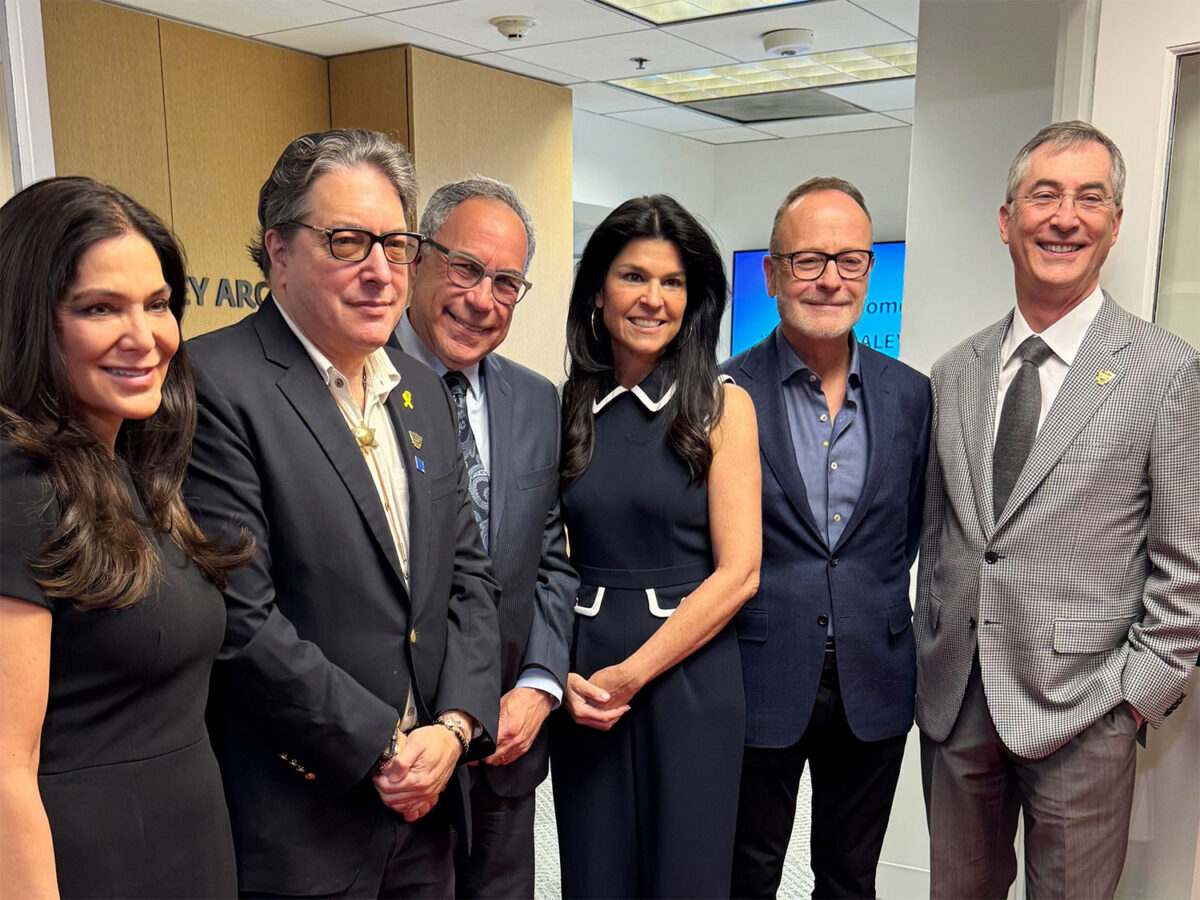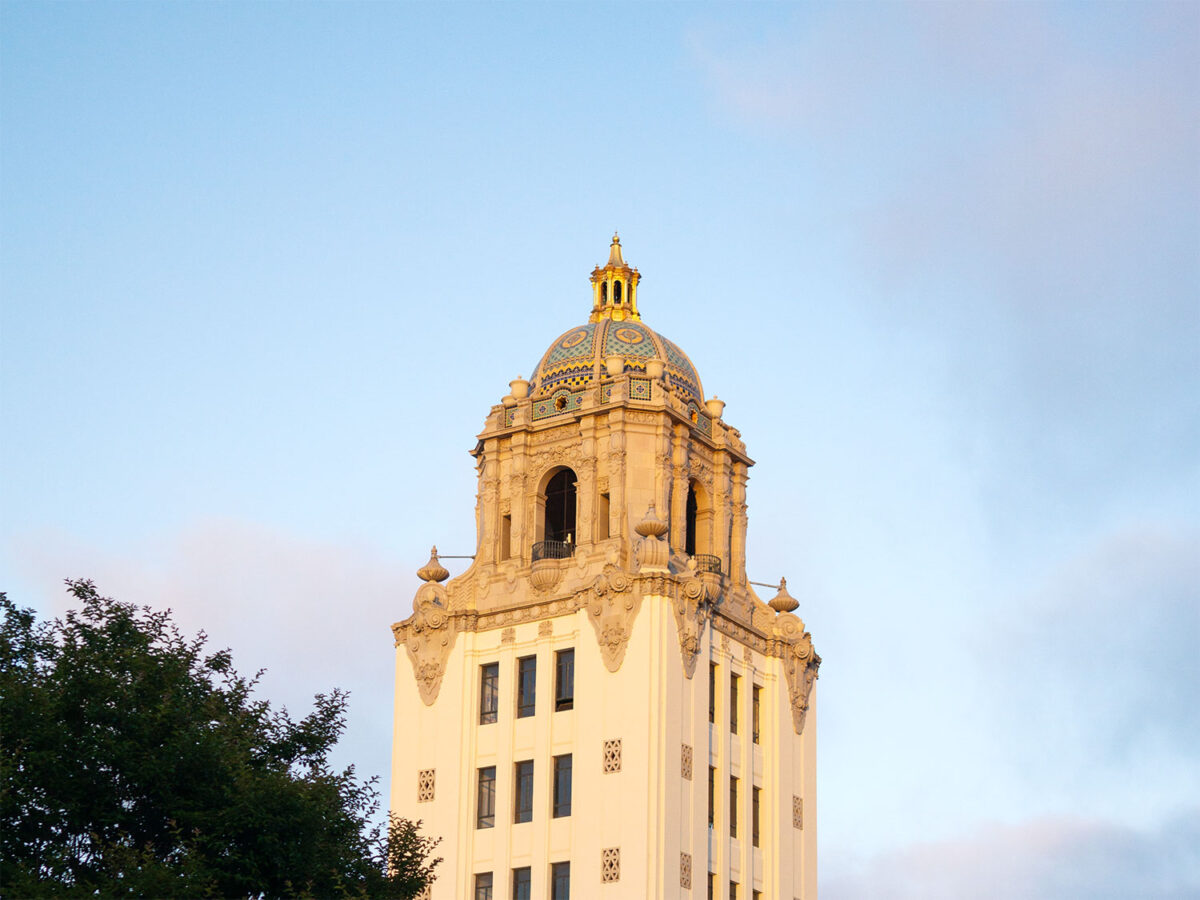The Beverly Hills Planning Commission unanimously approved an extension of the Conditional Use Permit and Historic Incentive Permit for a planned hotel development at 9111 Wilshire Boulevard. The project will transform the historic structure into a boutique hotel just as the area becomes more accessible via the Metro D Line (formerly known as the Purple Line). Although the project first received approval back in January 2020, construction never began, necessitating the extension.
“Adaptive reuse is really something that we all strive to do when we’re looking at these…historically significant buildings,” said Commissioner Myra Demeter at the Feb. 25 hearing.
The cubic structure at 9111 Wilshire, located just west of Doheny Drive and east of the Golden Triangle, was built in stages over the decades. The one-story tower base and mezzanine were constructed in 1958 as the main branch for Gibraltar Savings and Loan. This was followed a year later with the cantilevered office tower atop the base, or Banking Hall. Both were designed by the architectural firm of William Pereira and Charles Luckman, both of whom Beverly Hills includes on its List of Master Architects. Ten years later, in 1968, Beverly Hills National Bank built a one-story structure designed by Beverly Hills Master Architect Maxwell Starkman.
In 1985, Beverly Hills National Bank shut its doors for good. Gibraltar Savings and Loan closed in 1989. The bank that bought Gibraltar, Security Pacific Corporation, continued to operate out of 9111 Wilshire for a number of years. As for National Bank, actor Harry Lewis and his wife Marilyn bought up its former headquarters and transformed it into the restaurant Kate Mantilini, named after an L.A. boxing promoter from the ’40s and ’50s. The idiosyncratic architectural firm Morphosis redesigned the bank into a postmodern, refined take on the American diner–a long counter with a view of the kitchen, intimate booths recessed into the interior facade, simultaneously cloistered and wide open. The restaurant became a Beverly Hills institution until rising rent pushed it out in 2014. The former Gibraltar Savings branch and shuttered Kate Mantilini restaurant have sat vacant since then.
In 2016, the Planning Commission granted historical status to 9111 Wilshire. That same year, the property was acquired by Charles Company, owned by developers Mark and Arman Gabay, and later transferred to Oakshire, LLC (Oakshire). The latter entity applied to the Planning Commission in 2019 to restore and revitalize 9111 Wilshire.
Oakshire proposal sought to turn the former banking and office space into a 154-room hotel boutique hotel and bring a restaurant back to the former Kate Mantilini location. The mezzanine within the Gibraltar Banking Hall would say goodbye to bank tellers and hello to masseuse tables with the introduction of a spa and fitness area. On the third floor, the “Gibraltar Square Hotel and Restaurant” would have a 2,300 square foot café and restaurant. Right outside, on the rooftop of the Banking Hall, Oakshire would place a pool deck with cabanas.
The application also requested approval of a Conditional Use Permit (CUP) for modified vehicle loading spaces and use of an off-site parking garage. Oakshire also sought approval of a Historic Incentive Permit (HIP) to allow use of a hotel that directly abuts a residential zone.
The Planning Commission approved the application in January 2020, but work has yet to commence. In order to prevent the permits from expiring, Oakshire returned to the Planning Commission for an extension on Feb. 25.
A representative for Oakshire explained to the Planning Commission that COVID-19 had caused the delay in construction. “It goes without saying the COVID pandemic has impacted all sectors of the economy, most notably the hospitality industry. And needless to say, our plans to start construction have been delayed as a result,” said Jack Kurchian, who called in to the meeting and identified himself as a representative. While Oakshire had begun interior demolition and environmental remediation, Kurchian said that they “are looking forward to commencing construction later this year.”
The permit renewal drew only one public comment from Jonah Breslau, speaking on behalf of Los Angeles Alliance for a New Economy and Unite Here Local 11, Hospitality Workers Union. Breslau argued that, while the city’s regulatory framework had not changed since the permits were first approved, the economic conditions in the city had as a result of COVID-19. “COVID has reshaped our working lives and made residents and families spend more time at home. This increases the privacy and other challenges of a hotel operating on a site next a residential area,” Breslau said.
In response, Kurchian pointed out that the project would not be completed for at least two years.
Chair Peter Ostroff asked the applicant about whether they had given any thought to utilizing the mixed-use ordinance, which the city passed after the Planning Commission first approved the project. “We have considered that. The challenge is that we believe that for housing, you require outdoor balconies, which require modifications to the exterior of the building, which our landmark designation prohibits.”
Community Development Department Director Ryan Gohlich pointed out that the city requires 200 square feet of open spaces per residential unit in a building. “That open space can either be provided as private open space directly attached to the unit or it can also be provided as common open space,” he said, giving the example of rooftops open to residents. Additionally, the Planning Commission has the authority to deviate from requirements in cases of adaptive reuse of office buildings.
Ostroff also suggested that the one-year provision in the permitting process is “unrealistic” and “insufficient for a project like this to break ground.” Gohlich offered that the next time the Commission performs “code cleanup,” they revisit the time frame of the permits.
“It is quite challenging nowadays with various codes that have to be complied with, to where somebody is able to actually start physical construction within one year of approval,” Gohlich said.







